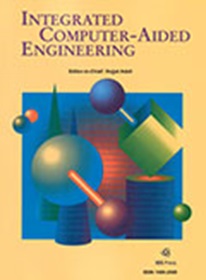Real-time facial expression recognition using smoothed deep neural network ensemble
IF 5.3
2区 计算机科学
Q1 COMPUTER SCIENCE, ARTIFICIAL INTELLIGENCE
引用次数: 18
Abstract
Facial emotion recognition (FER) has been extensively researched over the past two decades due to its direct impact in the computer vision and affective robotics fields. However, the available datasets to train these models include often miss-labelled data due to the labellers bias that drives the model to learn incorrect features. In this paper, a facial emotion recognition system is proposed, addressing automatic face detection and facial expression recognition separately, the latter is performed by a set of only four deep convolutional neural network respect to an ensembling approach, while a label smoothing technique is applied to deal with the miss-labelled training data. The proposed system takes only 13.48 ms using a dedicated graphics processing unit (GPU) and 141.97 ms using a CPU to recognize facial emotions and reaches the current state-of-the-art performances regarding the challenging databases, FER2013, SFEW 2.0, and ExpW, giving recognition accuracies of 72.72%, 51.97%, and 71.82% respectively.基于平滑深度神经网络集成的实时面部表情识别
由于面部情绪识别在计算机视觉和情感机器人领域的直接影响,在过去的二十年中得到了广泛的研究。然而,用于训练这些模型的可用数据集经常包含由于标记者偏见导致模型学习错误特征而导致的错误标记数据。本文提出了一种人脸情绪识别系统,将人脸自动检测和面部表情识别分开处理,面部表情识别采用集成方法,由4个深度卷积神经网络组成,并采用标签平滑技术处理缺失标记的训练数据。该系统使用专用图形处理单元(GPU)识别面部表情仅需13.48 ms,使用CPU识别面部表情仅需141.97 ms,在FER2013、SFEW 2.0和ExpW等具有挑战性的数据库中达到了当前最先进的性能,识别准确率分别为72.72%、51.97%和71.82%。
本文章由计算机程序翻译,如有差异,请以英文原文为准。
求助全文
约1分钟内获得全文
求助全文
来源期刊

Integrated Computer-Aided Engineering
工程技术-工程:综合
CiteScore
9.90
自引率
21.50%
发文量
21
审稿时长
>12 weeks
期刊介绍:
Integrated Computer-Aided Engineering (ICAE) was founded in 1993. "Based on the premise that interdisciplinary thinking and synergistic collaboration of disciplines can solve complex problems, open new frontiers, and lead to true innovations and breakthroughs, the cornerstone of industrial competitiveness and advancement of the society" as noted in the inaugural issue of the journal.
The focus of ICAE is the integration of leading edge and emerging computer and information technologies for innovative solution of engineering problems. The journal fosters interdisciplinary research and presents a unique forum for innovative computer-aided engineering. It also publishes novel industrial applications of CAE, thus helping to bring new computational paradigms from research labs and classrooms to reality. Areas covered by the journal include (but are not limited to) artificial intelligence, advanced signal processing, biologically inspired computing, cognitive modeling, concurrent engineering, database management, distributed computing, evolutionary computing, fuzzy logic, genetic algorithms, geometric modeling, intelligent and adaptive systems, internet-based technologies, knowledge discovery and engineering, machine learning, mechatronics, mobile computing, multimedia technologies, networking, neural network computing, object-oriented systems, optimization and search, parallel processing, robotics virtual reality, and visualization techniques.
 求助内容:
求助内容: 应助结果提醒方式:
应助结果提醒方式:


